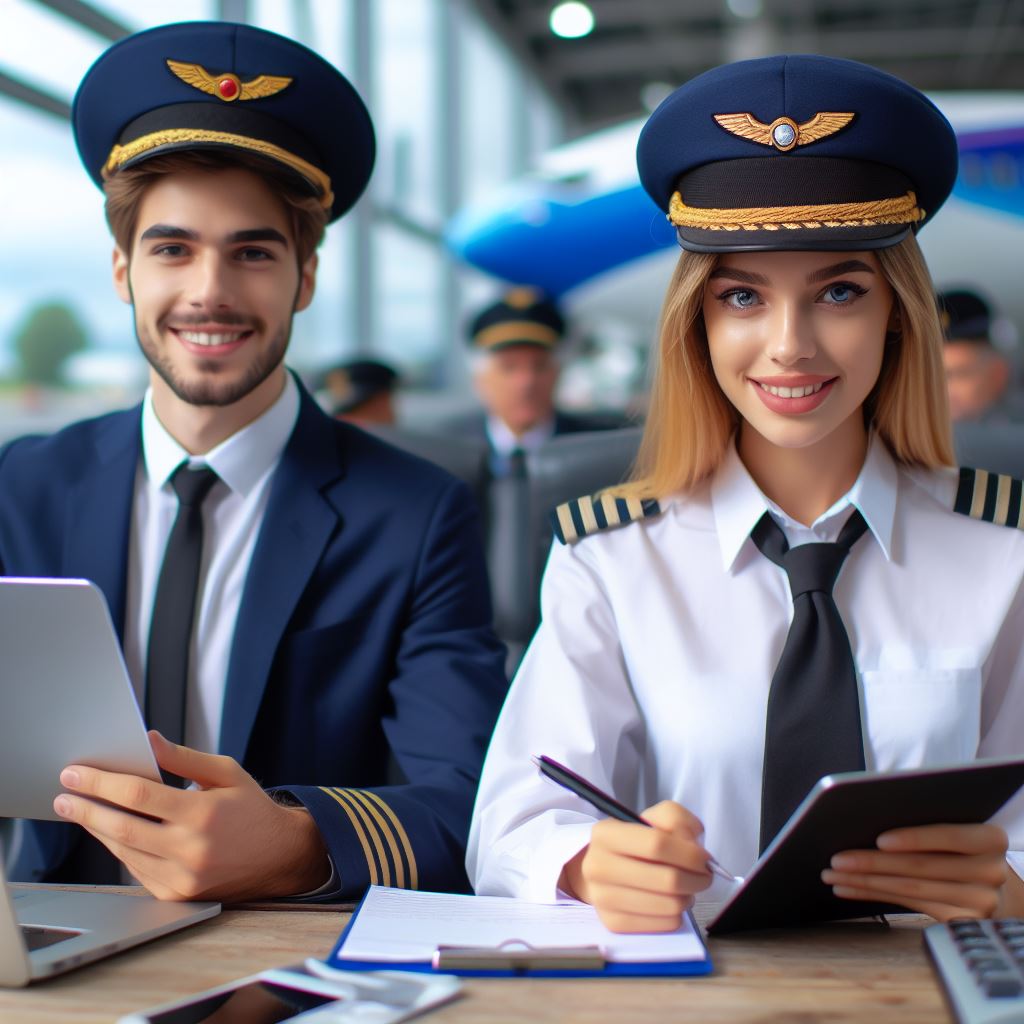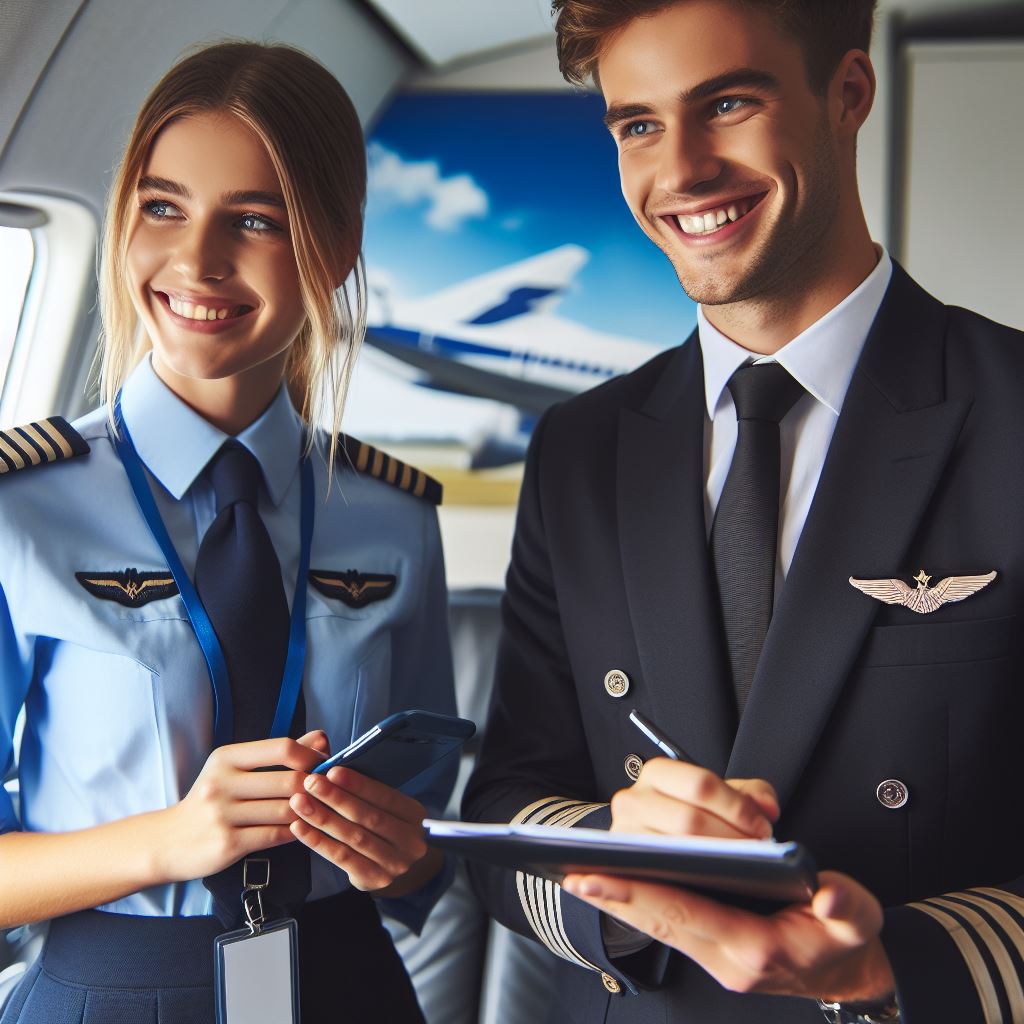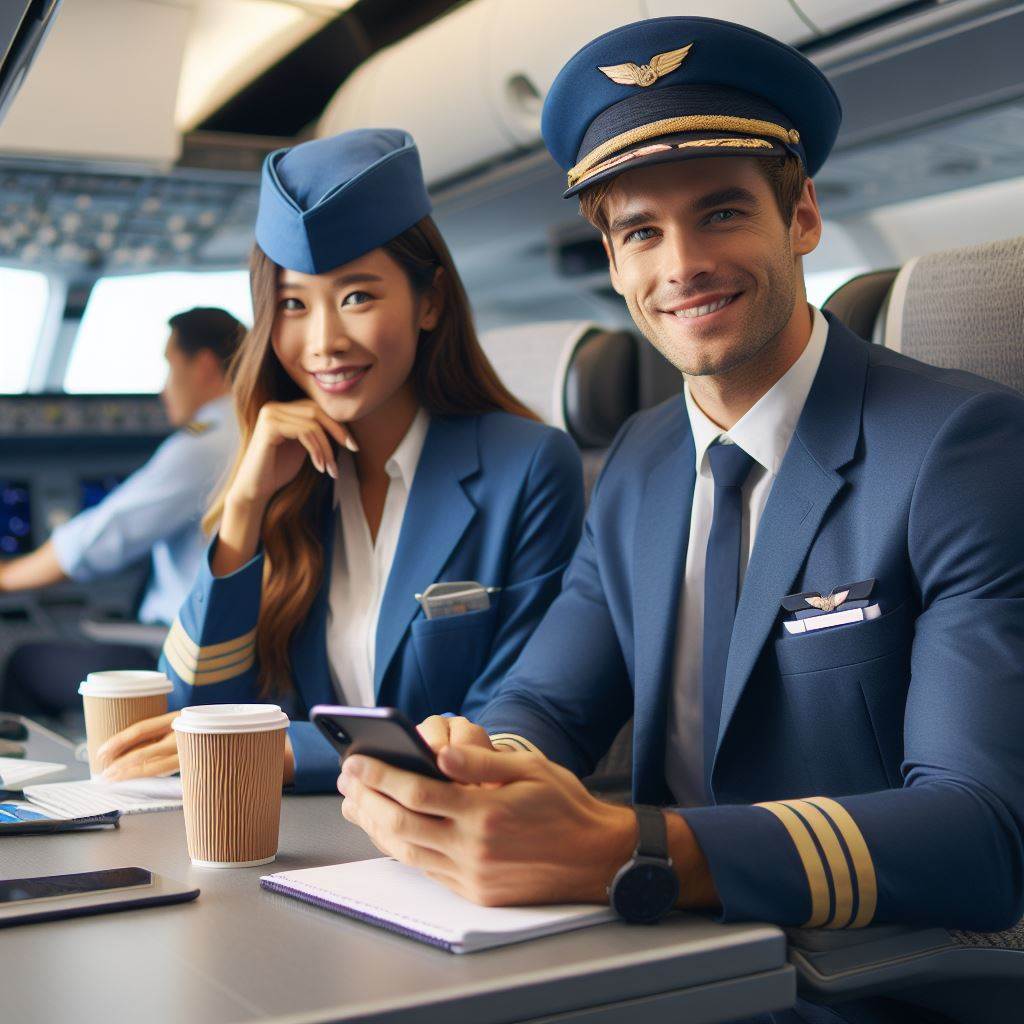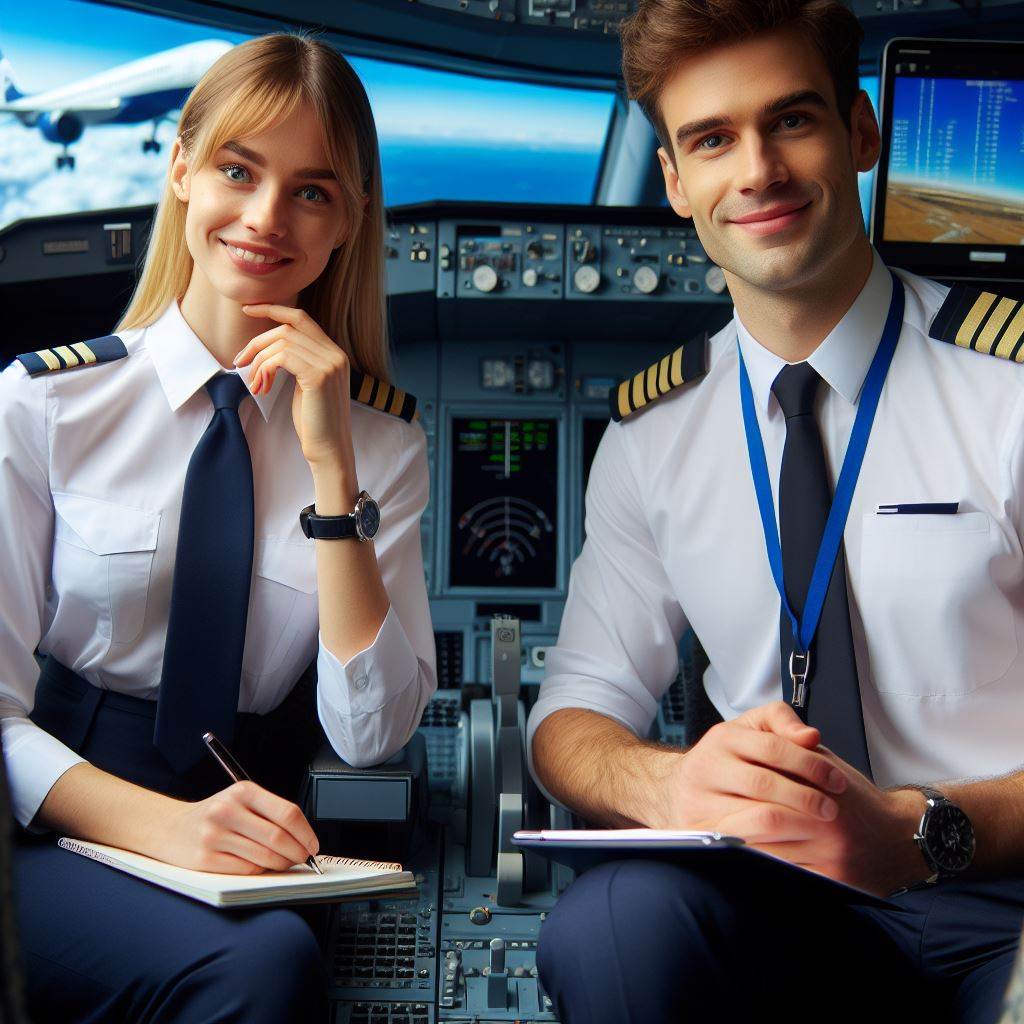Introduction
Welcome aboard! As an Aussie airline pilot, every day brings exhilarating challenges.
Flying across this vast, beautiful country is a privilege.
The importance of our role in connecting people, places, and cultures is immense.
From bustling cities to remote outback communities, we facilitate vital connections.
The fascination lies in the blend of precision and adventure that defines our profession.
Join me as we delve into a day in the life of an Aussie airline pilot.
From the crack of dawn, the anticipation of takeoff fills the air.
Pre-flight checks ensure safety and readiness.
As the engines roar to life, the thrill of flight takes over.
Guiding our aircraft through the ever-changing skies, we navigate with skill and precision.
But being an airline pilot is more than just flying planes.
It’s about being a trusted guardian of passengers’ safety and comfort.
It’s about embracing the responsibility of transporting dreams, aspirations, and reunions.
And it’s about the privilege of witnessing breathtaking sunrises, majestic landscapes, and endless horizons from the cockpit.
So buckle up and get ready for an insider’s glimpse into the captivating world of aviation Down Under.
Let’s soar together through the endless blue skies of Australia!
Requirements to Become an Airline Pilot in Australia
Do you dream of soaring through the skies and becoming an airline pilot in Australia? It’s not an easy path, but with determination and hard work, it is definitely achievable. Here are the necessary qualifications and prerequisites you need to fulfill to turn your dreams into reality.
- To become an airline pilot in Australia, you need to meet specific requirements and qualifications.
- You must be 18.
- A high school diploma or equivalent is necessary.
- A bachelor’s degree can be advantageous.
- Excellent English language skills are essential.
- You must pass a thorough medical examination.
- Obtaining a Class 1 Medical Certificate is required.
- Flight training at a recognized school is mandatory.
- You must accumulate flight hours.
- A Private Pilot License (PPL) is the initial step.
- A Commercial Pilot License (CPL) is necessary.
- A Multi-Engine Instrument Rating (MEIR) is required.
- The ultimate goal is to obtain an Air Transport Pilot License (ATPL).
- Passing the Airline Transport Pilot Exam is mandatory.
- Continuous education and training are essential.
- Personal qualities like discipline and adaptability are important.
Becoming an airline pilot in Australia requires dedication, perseverance, and a strong passion for aviation.
By fulfilling these qualifications and prerequisites, you can embark on an exciting and rewarding career that allows you to explore the world from a whole new perspective. So, start working towards your dream and get ready to take flight!
Daily Routine and Responsibilities of an Aussie Airline Pilot
Typical Day in the Life of an Airline Pilot in Australia
- Wake up early to prepare for the day ahead and ensure a well-rested mind and body.
- Check the weather conditions and study the flight plan for the assigned route.
- Arrive at the airport and have a thorough pre-flight briefing with the crew members.
- Conduct a pre-flight inspection of the aircraft, including checking the engines, systems, and fuel.
- Board the plane and prepare the cockpit by setting up the necessary instruments and equipment.
- Communicate with air traffic control and request clearance for takeoff.
- Perform the pre-flight checklist, which includes verifying the aircraft’s systems and ensuring safety measures.
- Takeoff, monitor and adjust the aircraft’s controls, and ensure a smooth ascent.
- Once at cruising altitude, collaborate with the co-pilot to manage navigation and perform regular system checks.
- Communicate with air traffic control throughout the flight, updating them on position and reporting any concerns.
- Monitor weather conditions and anticipate necessary adjustments to the flight plan.
- During long-haul flights, take breaks and rest in accordance with established regulations.
- Prepare for the descent and landing, adjusting the aircraft’s speed and altitude accordingly.
- Communicate with the cabin crew to ensure a seamless transition and prepare passengers for landing.
- Safely land the plane, ensuring a smooth touch-down and successful arrival.
- Taxi the aircraft to its designated gate, following ground control’s instructions.
- Conduct a post-flight inspection, checking for any issues or concerns and documenting them.
- Debrief with the crew, discussing the flight and sharing any important information or lessons learned.
- Complete required paperwork, including flight reports and maintenance requests, if necessary.
- Rest and rejuvenate before preparing for the next flight, ensuring adequate rest for optimal performance.
Responsibilities and Duties Undertaken During Shifts
- Safely operate and navigate the aircraft, following standard operating procedures and guidelines.
- Communicate effectively with air traffic control and cabin crew to ensure a smooth and coordinated flight.
- Adhere to all safety protocols, including pre-flight checks, emergency procedures, and evacuation plans.
- Continuously monitor the aircraft’s systems and instruments to detect any anomalies or malfunctions.
- Collaborate with the co-pilot to manage navigation, fuel consumption, and overall flight performance.
- Keep up-to-date with the latest aviation regulations and maintain a thorough understanding of flight policies.
- Stay informed about weather conditions, airspace restrictions, and airport procedures to make informed decisions.
- Prioritize passenger safety and comfort, providing a calm and secure environment throughout the flight.
- Maintain accurate records of flight activities and complete all required documentation promptly.
- Participate in regular training and proficiency checks to ensure knowledge and skills are up to date.
The Importance of Adhering to Safety Protocols and Regulations
- Safety protocols and regulations are designed to protect the lives of passengers, crew, and the general public.
- Adhering to these protocols reduces the risk of accidents and ensures a high level of aviation safety.
- Following regulations helps maintain consistency and standardization within the aviation industry.
- Compliance with safety protocols demonstrates professionalism and enhances public trust in the airline industry.
- Safety procedures are constantly updated to incorporate lessons learned from previous incidents and advancements in technology.
- Non-compliance with safety regulations can lead to severe consequences, including legal penalties and loss of professional license.
- Prioritizing safety allows pilots to effectively handle emergencies and maintain control in challenging situations.
- Adhering to safety protocols and regulations fosters a culture of responsibility and accountability within the aviation community.
- Constant vigilance and adherence to safety guidelines create a secure environment for all parties involved in air travel.
- The commitment to safety is a shared responsibility among all aviation stakeholders, including pilots, airlines, and regulatory authorities.
Preparing for a Flight
An airline pilot has to complete several pre-flight preparations before taking off. These include:
- Performing a thorough aircraft inspection, checking for any mechanical issues or malfunctions.
- Verifying the weight and balance of the aircraft to ensure it is within safe limits.
- Reviewing weather reports and forecasts to determine if there are any adverse conditions.
- Studying the flight plan and reviewing route details, including any potential hazards or restrictions.
- Obtaining the necessary documentation for the flight, such as flight release forms and navigation charts.
- Checking the availability and serviceability of all required equipment, such as radios and navigation aids.
Once the pre-flight preparations are complete, the pilot participates in a pre-flight briefing and carries out checklist procedures as follows
- The pre-flight briefing involves discussing the flight plan, weather conditions, and any operational considerations.
- The pilot goes through a comprehensive checklist, systematically verifying the condition and functionality of various systems.
- This includes checking the aircraft’s control surfaces, fuel and hydraulic systems, navigation and communication equipment, etc.
- Emergency procedures are reviewed, ensuring the pilot is prepared for any unexpected situations that may arise.
- The cabin and passenger areas are inspected to ensure they are secure, clean, and compliant with safety regulations.
Communication is vital for an airline pilot, both with the flight crew and air traffic control
- Prior to the flight, the pilot communicates with the co-pilot to discuss responsibilities and confirm the flight plan.
- During the pre-flight briefing, the pilot communicates with other crew members to establish clear roles and expectations.
- Effective communication is crucial during the flight to ensure smooth coordination and timely response to any changes or issues.
- The pilot must maintain regular contact with air traffic control, receiving instructions and providing updates on the aircraft’s status.
- Clear and concise communication helps to enhance safety and efficiency throughout the flight journey.
Overall, the pre-flight preparations, briefing, checklists, and communication procedures are essential for an airline pilot to ensure a successful and safe flight for everyone on board.
Read: Train Driving in Australia: Pros & Cons
Operating the Aircraft
- Pilots follow precise procedures during flight phases, from takeoff to landing, ensuring safe and efficient operations.
- Takeoffs demand data input and engine monitoring.
- Landings involve using flaps and spoilers.
- In-flight operations include navigation and communication.
- Autopilot systems maintain flight parameters.
- Pilots must monitor autopilot systems.
- Pilots continuously observe flight systems.
- Pre-flight inspections ensure airworthiness.
- Pilots scan for traffic visually and with radar.
- Flight management systems optimize routes.
- Pilots communicate with air traffic control.
- Checklists ensure critical actions.
- Pilots accelerate for takeoff and rotate smoothly.
- They retract landing gear and flaps.
- Pilots monitor climb parameters for safety.
- Autopilot maintains cruise parameters.
- Pilots remain vigilant during autopilot use.
- In-flight, pilots update passengers and crew.
- Approach and landing require specific procedures.
- Pilots monitor glide path and airspeed.
- Adjustments ensure correct parameters.
- Pilots flare for smooth touchdown.
- They use reverse thrust for deceleration.
- Throughout, pilots rely on training and experience.
- Piloting demands technical skills and decision-making.
- Operating aircraft is complex and demanding.
Read: Impact of Tech on Train Driving in Oz

Discover More: The Realities of Layovers for Aus Flight Crews
Explore Further: Australian Truck Tech: Latest Trends
Handling Contingencies and Emergencies
In the high-pressure world of aviation, contingency planning and emergency management are vital skills for airline pilots in Australia. With the safety and lives of passengers at stake, these professionals are trained extensively to handle a wide range of unexpected situations.
How airline pilots in Australia deal with contingencies and emergencies
When faced with contingencies and emergencies, pilots follow well-established protocols to ensure the best possible outcome. One such situation is engine failure, which can occur due to technical malfunctions or external factors like bird strikes.
In such cases, pilots are trained to immediately assess the situation, communicate with air traffic control, and follow the appropriate checklist to safely execute an emergency landing.
Medical emergencies on board require pilots to make quick decisions while prioritizing the well-being of the affected passenger. They often seek assistance from cabin crew members who have medical training.
Communication with air traffic control is vital in such situations, as they provide guidance and coordinate with ground medical services if necessary.
Adverse weather conditions, including thunderstorms or heavy fog, pose another challenge for airline pilots. They rely on advanced weather radar systems and information from air traffic control to make informed decisions.
In case the conditions deteriorate unexpectedly, pilots might opt for diverting to an alternate airport or holding pattern until the weather improves.
Protocols for handling engine failures, medical emergencies, and adverse weather conditions
In handling emergencies, effective communication plays a critical role. Pilots need to clearly convey their intentions, requirements, and expectations to air traffic control, cabin crew, and other relevant personnel.
This ensures everyone is on the same page and allows for quick and efficient coordination of resources.
Importance of communication and decision-making skills in such situations
Decision-making skills also play a crucial role in managing contingencies and emergencies. Pilots must quickly analyze the situation, consider available options, and make informed choices.
These decisions can involve factors such as fuel consumption, passenger safety, and the wellbeing of the aircraft. By applying their expertise and following established procedures, pilots can navigate through challenging situations.
Your Personalized Career Strategy
Unlock your potential with tailored career consulting. Get clear, actionable steps designed for your success. Start now!
Get StartedTraining and simulation exercises are integral to preparing pilots for handling contingencies and emergencies. They undergo regular training sessions that simulate various scenarios, allowing them to practice their skills in a controlled environment.
These simulations not only enhance their technical abilities but also help develop the mental agility required to make split-second decisions.
In short, airline pilots in Australia are well-equipped to handle contingencies and emergencies. By following established protocols for engine failures, medical emergencies, and adverse weather conditions, pilots can efficiently manage unexpected situations.
Effective communication and decision-making skills are paramount in ensuring the safety of passengers and crew. Through rigorous training and simulation exercises, pilots are prepared to face any challenges that may arise during their day in the skies.
Read: How to Become a Train Driver in Australia
Delve into the Subject: Health and Fitness Tips for Aussie Pilots
Delve into the Subject: How AI is Changing Logistics in Australia
Work-Life Balance and Challenges
Challenges Faced by Aussie Airline Pilots
- Long working hours that can exceed the standard 9 to 5 schedule.
- Irregular schedules filled with early morning or overnight flights.
- Frequent time zone changes leading to irregular sleep patterns and jet lag.
- Physically demanding job that requires alertness and focus for extended periods.
Impact on Personal Lives and Relationships
- Limited time spent with family and friends due to unpredictable work schedules.
- Difficulties in maintaining social commitments and attending important family events.
- Increased strain on personal relationships due to long periods of separation.
- Inability to have a regular routine or participate in hobbies and personal interests.
Strategies to Maintain a Healthy Work-Life Balance
- Effective time management to make the most of their off-duty days.
- Prioritizing self-care, including exercise, proper diet, and sufficient rest.
- Open communication with loved ones to maintain understanding and support.
- Seeking professional help or counseling to cope with stress and emotional challenges.
- Engaging in hobbies and activities that help pilots unwind and relax.
- Developing a support network within the aviation community to share experiences and coping strategies.
- Utilizing technology to stay connected with family and friends during layovers or breaks.
- Making the most of downtime by engaging in personal development activities.
Maintaining a healthy work-life balance is a constant challenge for Aussie airline pilots. Long working hours, irregular schedules, and the physical demands of the job can take a toll on their personal lives and relationships.
However, by implementing effective strategies, pilots can strive to achieve a harmonious balance between work and personal life, allowing them to find fulfillment in both areas.
It is crucial for pilots to prioritize their well-being and make conscious efforts to nurture their relationships while pursuing their passion for aviation.
Read: Day in the Life of an Aussie Train Driver
Conclusion
In closing, being an airline pilot in Australia comes with immense responsibilities, challenges, and rewards. The life of an Aussie airline pilot is filled with excitement and adventure, but it also requires dedication and hard work.
Key points discussed in the blog post
Throughout this blog post, we have discussed the daily routine of an Australian airline pilot, from the early mornings and pre-flight preparations to the long hours in the cockpit.
We have explored the technical skills and knowledge required for this profession, as well as the importance of teamwork and communication.
Responsibilities, challenges, and rewards of being an airline pilot in Australia
Being an airline pilot is not without its challenges. Pilots must be prepared to handle unexpected situations, adverse weather conditions, and time zone adjustments. They must also stay up-to-date with the latest regulations and technology advancements.
However, the rewards of being an airline pilot in Australia are plentiful. Pilots get to travel the world, experiencing different cultures and seeing breathtaking landscapes.
They have the privilege of connecting people, reuniting families, and transporting goods across vast distances. The sense of accomplishment and the thrill of flying above the clouds are truly one-of-a-kind.
End on an inspiring note, encouraging readers to consider a career as an airline pilot
If you have a dream of becoming an airline pilot, don’t let anything hold you back. Pursuing this career requires perseverance, dedication, and a love for aviation. It is a challenging path, but it is also immensely rewarding.
So, take the leap of faith and embark on an incredible journey as an airline pilot. Discover the skies, explore the world, and make a difference in people’s lives.
It is an inspiring career that offers endless possibilities and a sense of fulfillment like no other. Start your adventure today and soar to new heights as an Aussie airline pilot!




